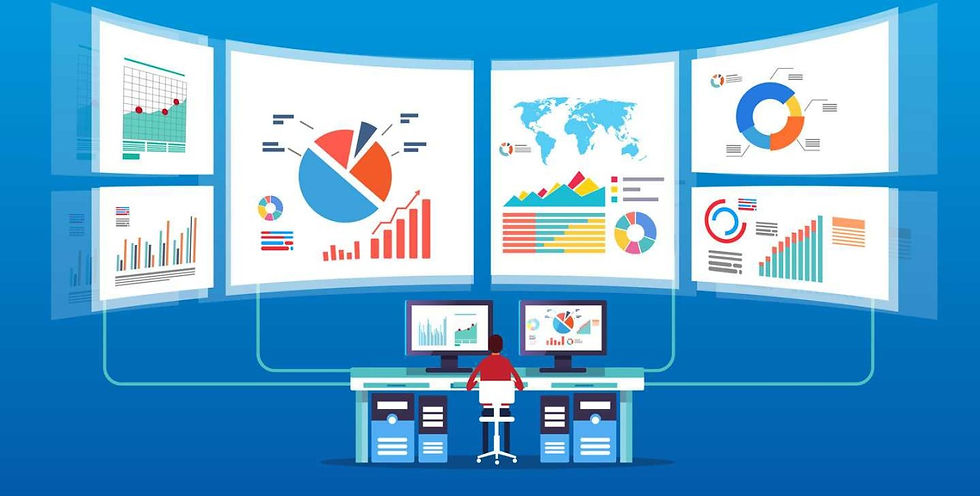Advanced Statistical Techniques for Data Science Professionals
- k86874248
- Oct 8, 2024
- 3 min read

In the rapidly changing field of data science, a strong grasp of statistical techniques is essential. While many professionals start with foundational statistics, advancing to more complex methods can greatly enhance their analytical capabilities. This article explores advanced statistical techniques that every data science professional should consider integrating into their skill set.
1. Bayesian Statistics
Bayesian statistics provides a robust framework for integrating prior knowledge into statistical analysis. Unlike traditional frequentist methods, which focus solely on the data at hand, Bayesian techniques enable you to update your beliefs as new evidence emerges. This approach is particularly valuable in situations where data is limited or costly to gather.
Key Concepts:
Prior Probability: Represents initial beliefs before observing new data.
Likelihood: The probability of observing the data given specific parameters.
Posterior Probability: The updated probability after accounting for new data.
Applications:
Detecting fraud in financial transactions
Diagnosing medical conditions and evaluating treatment effectiveness
Conducting A/B testing for marketing campaigns
2. Multivariate Analysis
In practice, data is rarely univariate. Multivariate analysis allows you to explore relationships between multiple variables simultaneously. Techniques such as Principal Component Analysis (PCA) and Factor Analysis help reduce dimensionality and reveal underlying structures within complex datasets.
Key Techniques:
PCA: Transforms data into a new set of variables (principal components) that capture the most variance.
Cluster Analysis: Groups similar observations based on their features, uncovering patterns that may not be evident through univariate analysis.
Applications:
Segmenting markets
Analyzing images and videos
Studying social networks
3. Time Series Analysis
Time series analysis is crucial for data scientists working with temporal data. This technique aids in understanding patterns, trends, and seasonal variations over time. Commonly used techniques include ARIMA (AutoRegressive Integrated Moving Average) and Exponential Smoothing.
Key Concepts:
Trend: The long-term movement in data.
Seasonality: Regular patterns or cycles occurring at specific intervals.
Noise: Random fluctuations in data that do not relate to trends or seasonality.
Applications:
Forecasting stock prices
Predicting sales figures
Analyzing economic indicators
4. Machine Learning and Statistical Learning
Machine learning (ML) often intersects with statistical methods. A solid understanding of the statistical foundations of ML enhances model selection, evaluation, and interpretation. Techniques like regression analysis, support vector machines, and decision trees are built on strong statistical principles.
Key Concepts:
Overfitting: A model that is excessively complex, capturing noise rather than the underlying pattern.
Regularization: Methods (such as Lasso and Ridge regression) that add penalties to complex models to improve generalization.
Cross-Validation: A technique for assessing how results will generalize to an independent dataset.
Applications:
Developing predictive models
Performing image recognition
Analyzing natural language
5. Hypothesis Testing and Experimental Design
Understanding hypothesis testing is vital for making informed decisions based on data. This process involves formulating null and alternative hypotheses, choosing a significance level, and employing test statistics to draw conclusions.
Key Techniques:
t-tests: Used to compare means between two groups.
ANOVA (Analysis of Variance): Compares means among three or more groups.
Chi-Square Test: Evaluates relationships between categorical variables.
Experimental Design: Effectively designing experiments (e.g., randomized controlled trials) helps minimize bias and ensures the validity of results. Techniques such as blocking and randomization play a critical role here.
Applications:
Conducting clinical trials
Analyzing marketing campaign effectiveness
Testing product features
6. Resampling Methods
Resampling techniques, including bootstrapping and cross-validation, provide better estimates of statistical parameters and model performance. These methods help quantify the uncertainty associated with sample estimates.
Key Techniques:
Bootstrapping: Involves repeatedly sampling with replacement from the dataset to estimate the distribution of a statistic.
Cross-Validation: Divides data into subsets to evaluate model performance on unseen data, reducing the risk of overfitting.
Applications:
Evaluating model performance
Estimating confidence intervals
Selecting features in high-dimensional datasets
7. Advanced Regression Techniques
Beyond standard linear regression, advanced techniques can enhance model performance and interpretability. Methods such as Generalized Linear Models (GLMs), Quantile Regression, and Nonlinear Regression provide flexibility in modeling complex relationships.
Key Concepts:
GLMs: extend linear models to handle response variables with error distributions beyond the normal distribution.
Quantile Regression: Estimates relationships between variables for different quantiles of the response variable, offering a more comprehensive view of the data.
Applications:
Assessing risk in finance
Modeling environmental data
Studying health outcomes
Conclusion
Mastering advanced statistical techniques is essential for data science professionals who wish to extract meaningful insights from complex datasets. By incorporating methods such as Bayesian statistics, multivariate analysis, and machine learning, data scientists can elevate their analytical skills and drive more informed decision-making.
As the field of data science continues to evolve, staying abreast of the latest techniques and their applications will ensure that professionals remain at the forefront of this dynamic discipline. Embracing these advanced statistical methods will not only enhance your analytical capabilities but also empower you to tackle a broader range of challenges throughout your career.
If you're eager to deepen your expertise, explore options for a Data Science Training Course in Delhi, Noida, Lucknow, and other cities in India to stay updated with these advanced techniques.



Comments